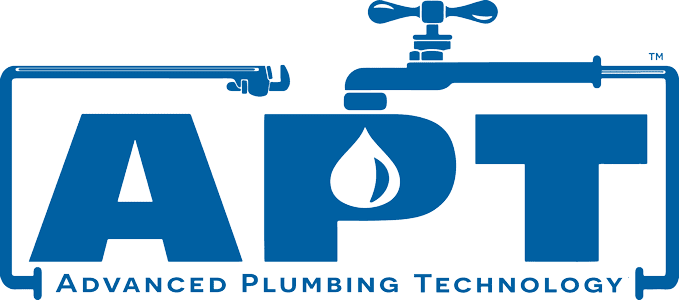The Benefits of Trenchless Pipelining vs Pipe Replacement
March 22nd, 2023Posted by APT Public Relations
Due to their resilience and lifespan, cast iron pipes have been widely employed in the plumbing industry for several decades. Nonetheless, cast iron pipes degrade with use and age owing to corrosion, rust, and wear and tear. This necessitates a potentially expensive and inconvenient pipe replacement.
Cast iron pipe replacement necessitates digging up streets, removing the old pipes, and installing new ones, which may significantly disrupt everyday life and result in costly repairs. When it comes to fixing the issue there used to be two basic paths: Repair or Replace. However, with our Advanced Plumbing Technology, we are able to offer Trenchless Pipe Repair that actually provides your building with a completely new system.
Trenchless Pipe Repair as a Means of Replacement
Pipelining has become an option for repairing and maintaining cast-iron pipes in recent years. In place of completely replacing the lines, a pipelining project only relines them with a brand-new liner. A resilient, flexible substance called a liner is put into the pipe system and serves to repair and reinforce the pipes already there. This one has clear advantages compared to the time, effort, and money required by conventional pipe replacement techniques.
Comparing the cost of Trenchless Pipe Repair vs Cast Iron Pipe Replacement Reveals Significant Savings
Cost-effectiveness
Pipelining saves money since it requires less time and effort than traditional trenching methods. It takes less time to finish a pipeline, lowering labor costs. When compared to the expense of installing new cast-iron pipes, re-piping using pipe liners is a considerably more cost-effective option.
Very Little Interference with Regular Routines
Changing out cast iron pipes the old-fashioned way necessitates digging up and discarding the piping in question, which may be a significant inconvenience to residents. However, pipelining does not need digging; therefore, it is a less intrusive option. By simply inserting the liners into the existing pipes, the job may be finished more quickly and with less interference to everyday life.
Sustaining its quality over time
Pipelining utilizes liners built from long-lasting materials with the expectation that they will survive for decades. These liners are a long-term option for repairing and maintaining cast iron pipes since they are impervious to corrosion, rust, and other types of wear and tear. In contrast, it may be necessary to replace your cast iron pipes again in the future, which might add unnecessary expense and inconvenience.
Enhanced Capacity for Water Flow
Improvements in water pressure and quality may be possible once a pipeline is rerouted to boost the available flow rate. This is because pipelining utilize liners that are smooth and devoid of blockages, hence decreasing friction and enhancing water flow.
The Trenchless Pipe Repair Process
Maintenance and Preparation of the Pipes
Before beginning the pipelining operation, the existing pipes must be cleaned and prepared. This is done to guarantee the liner will attach and perform as intended by clearing the interior of the tubes of any dirt and accumulation. A successful pipelining project relies on meticulously cleaning and prepping the lines.
Trenchless Pipeliner Installation
The lining procedure continues with the lining’s installation. The piping system is lined with a solid yet pliable substance. The liner is often constructed from a specific resin or other substance that is durable and tough against wear and strain. A specialized tool is used to put the liner into the pipes and secure it into place.
Making Sure the Liner Holds Up During Curing and Testing
The liner needs to “cure,” or harden, for a certain period after installation. This ensures that the liner adheres entirely to the pipes and can withstand the pressures and stresses of use. The cured liner is next put through a battery of tests to confirm it was placed correctly and performs as expected. To guarantee the liner is functioning properly, it may be subjected to pressure tests, visual inspections, or other sorts of testing.
The Benefits of Trenchless Pipelining
The process of pipelining has various benefits over the more conventional ways of replacing pipes. This method of pipe replacement is quicker, causes less disruption, and costs less than the conventional method. Because it requires less digging and produces less trash than traditional pipe replacement procedures, pipelining is also a greener choice. Long-term advantages for homes and businesses may be gained when pipelining is used to enhance water quality and increase water flow capacity.
Pipelining as an Option to Replacing Cast-Iron Pipes: Some Closing Thoughts
When it comes to fixing and maintaining cast iron pipes, pipelining is a flexible and efficient option. Long-term benefits for homes and businesses may be realized, and it has various advantages over more conventional pipe replacement procedures. If you need to fix or replace your cast-iron pipes, you should look at pipelining as a possible solution.
Before you make your final decision make sure you get ahold of a professional to discuss aspects of each option. Our team is available to come help you understand the options and what they could mean to your family, business, or tenants.
